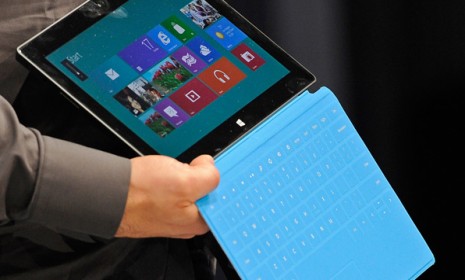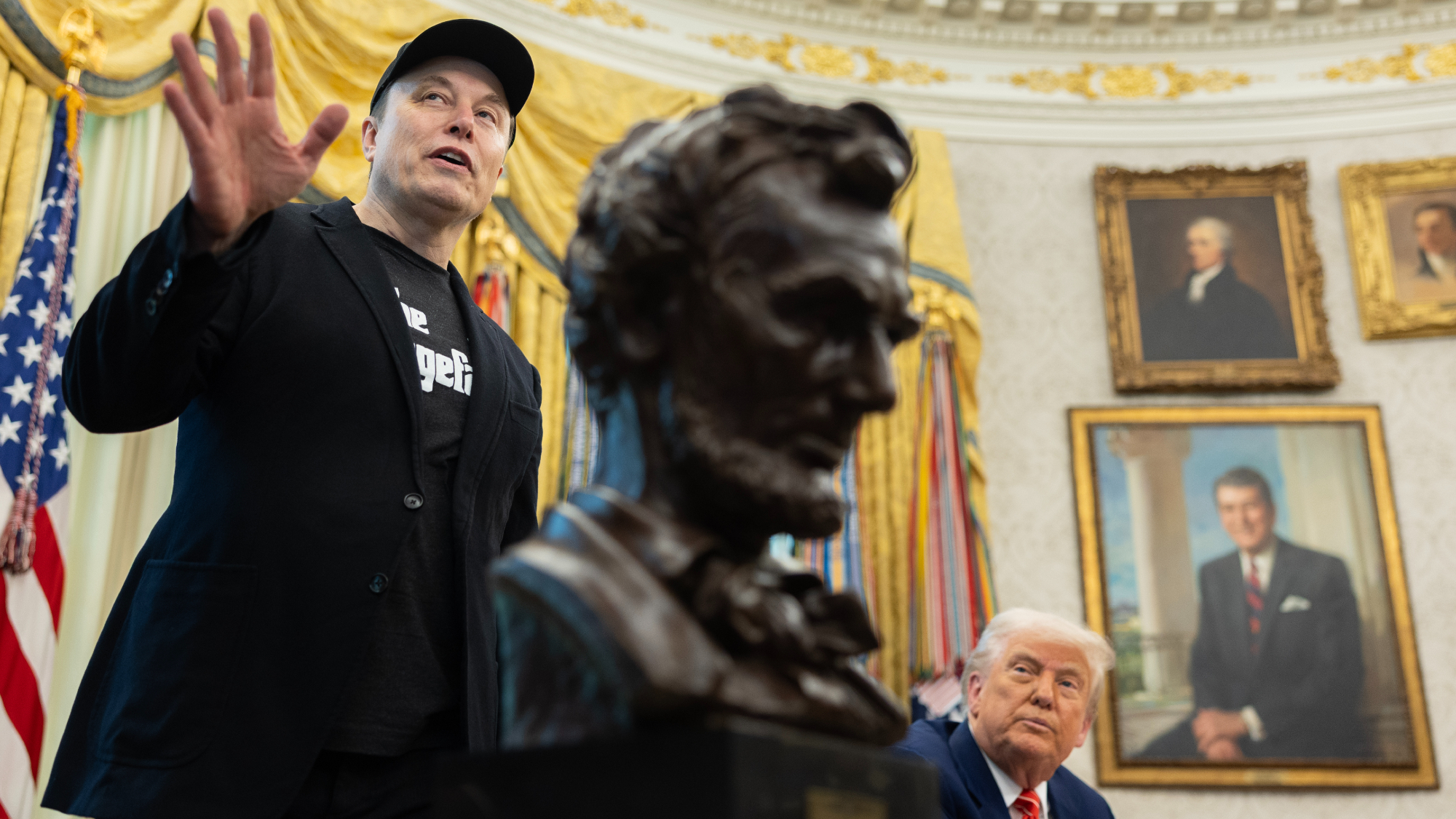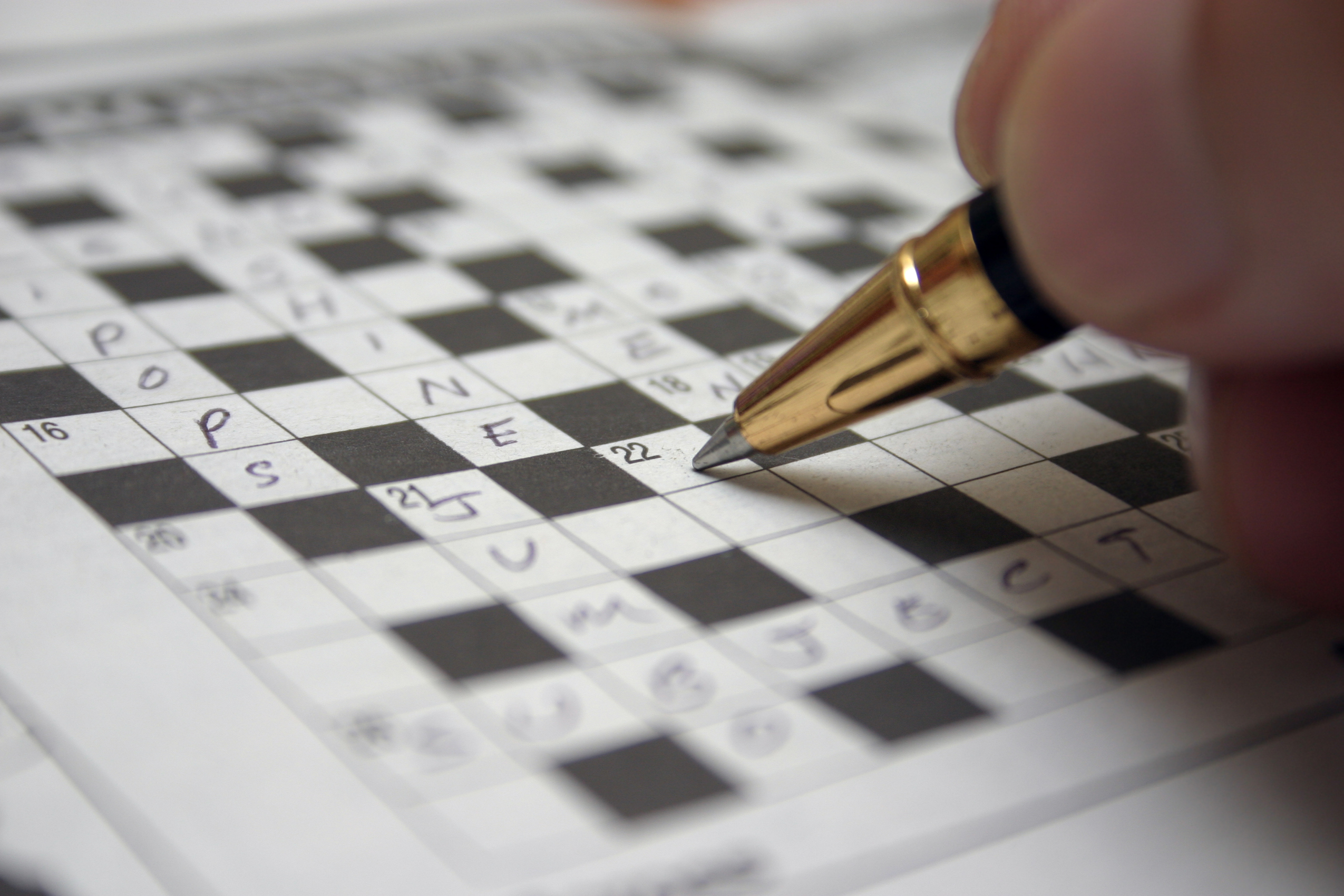Microsoft's game-changing Surface tablets: 5 talking points
The venerable tech giant leaps into the hardware business with a dynamic line of Windows 8 touchscreen slabs. Should Apple be afraid?

After a persistent stream of rumors, Microsoft, which has long made its living through software and operating systems, announced Monday that it's not only getting into the hardware business, but offering Windows-powered tablets that will compete with Apple's market-dominating iPad. Microsoft will release two versions of its tablet — dubbed Surface — both of which come equipped with a kickstand, keyboard, and stylus. (See a promo video below.) Some details are still hazy — like price tag and release date — but the Microsoft tablets are expected to premiere in time for the buying frenzy of the holiday season. Here, five talking points from Monday's big unveiling:
1. This is a big gamble for Microsoft
Microsoft "rarely makes its own hardware," say John Hermann and Matt Buchanan at BuzzFeed, usually leaving the actual computer building to partners like Dell, Hewlett-Packard, or Lenovo. And when Microsoft has actually made machinery itself, it has a pretty "spotty record," says Dominic Rushe at Britain's Guardian. Sure, "Microsoft's Xbox video gaming system is a world leader," but "its iPod rival Zune and Kin telephones proved disasters."
The Week
Escape your echo chamber. Get the facts behind the news, plus analysis from multiple perspectives.

Sign up for The Week's Free Newsletters
From our morning news briefing to a weekly Good News Newsletter, get the best of The Week delivered directly to your inbox.
From our morning news briefing to a weekly Good News Newsletter, get the best of The Week delivered directly to your inbox.
2. Microsoft will offer two different tablets
A thinner, more portable Surface runs Windows 8 RT and has similar dimensions to Apple's iPad. It uses NVIDIA's ARM processor and feels "very polished, with tight, clean lines," says Dieter Bohn at The Verge. The "Pro" Surface touts Windows 8 Pro and is slightly thicker (13.5 mm versus 9.3 mm). It boasts what Microsoft calls "Full HD," and runs Intel's snappier Ivy Bridge processor. "That means only the latter will be able to run all your Windows programs," says Hayley Tsukayama at the Washington Post. (See more specs here.)
3. Surface's screen isn't as sharp as the iPad's
The Surface tablets both boast iPad-sized 10.6-inch screens. Surface has a 1920 x 1080 display that the company is calling "ClearType," and the name is "definitely aiming for a Retina connotation," says Sam Biddle at Gizmodo. But Surface offers just 208 pixels per inch, compared to the iPad's 264. The verdict: Your iPad's Retina display is sharper.
A free daily email with the biggest news stories of the day – and the best features from TheWeek.com
4. Its keyboard cover is revolutionary...
The Surface works like any touchscreen tablet — but with a twist. The tablet comes standard with a kickstand and magnetic cover that snaps on like the iPad's, but Microsoft's version does Apple one better: The Surface cover doubles as an extremely thin keyboard and gesture-based touchpad. "This is a brilliant move on Microsoft's part," says Gizmodo's Biddle, "and something that instantly makes Surface one of the most exciting devices we've eyed in some time." Microsoft claims that typing on the tactile cover is twice as efficient as typing on a touchscreen.
5. ...But its other features are lacking
"I'm a sucker for techno-glitz," says Matt Novak at BuzzFeed, "but actually holding the Surface just isn't that satisfying." The pop-out stand makes the tablet noticeably bulkier than the iPad — a no-no when it comes to portability. And what's with the stylus, asks Ian Paul at PC World. Apparently, "Microsoft couldn't resist giving a nod to its legacy tablets," like the digital-pen-equipped Windows Tablet PC released in 2002, which was discontinued. But haven't consumers already used their swiping fingers to say, "Thanks, but no thanks?" The stylus is a questionable inclusion on Microsoft's part.
Judge for yourself:


